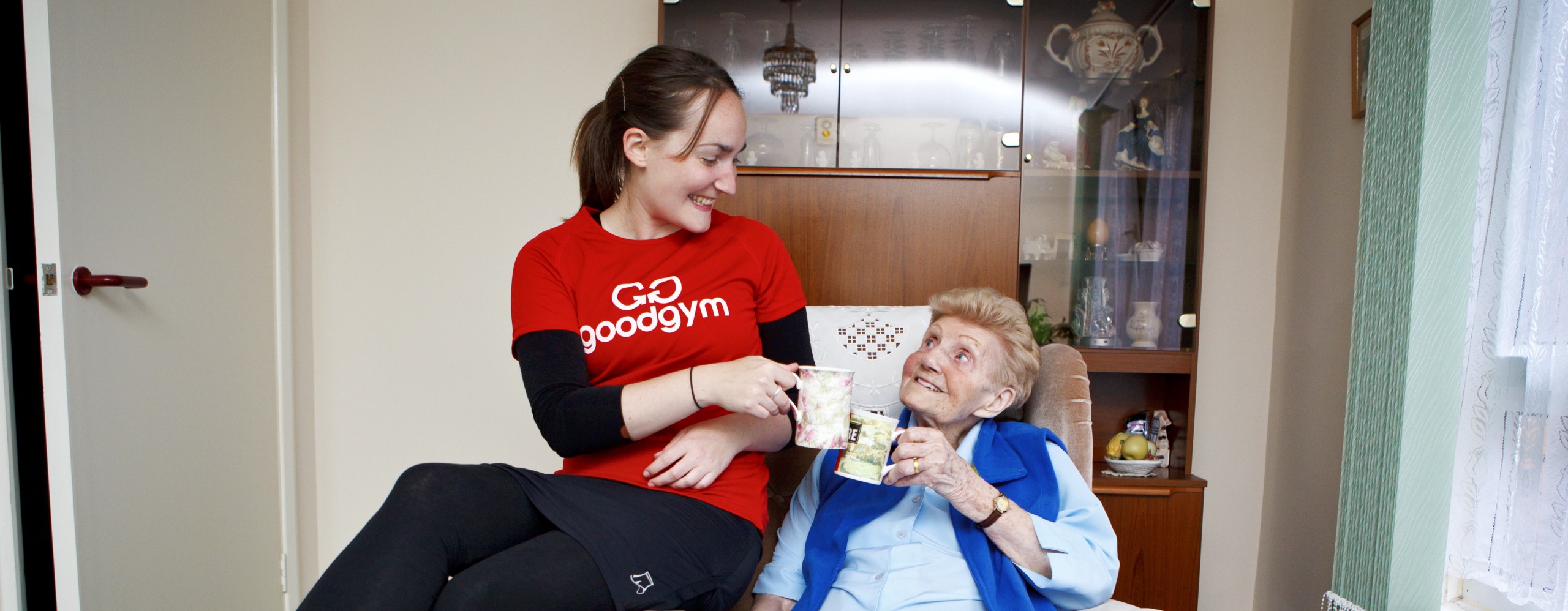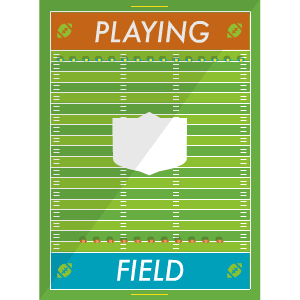

Like many great ideas, GoodGym is very simple. Two of our world’s most pressing issues are social isolation and ailments related to our growing inactivity. Loneliness, especially in older people, has a detrimental effect on well-being. Social isolation in the elderly has been shown to impact blood pressure, is closely linked to depression, and can increase the risk of death by 26 percent over seven years. One solution to isolation is creating a network linking new people together–but why not tackle another problem while we’re at it?
A reported 31 percent of adults over age 15 worldwide were insufficiently active in 2008 (according to the latest available statistics from the World Health Organization), contributing nearly 3.2 million deaths annually as a result of too little physical activity. Similar to isolation, inactivity carries its own health tolls–like a higher risk for heart disease, stroke, diabetes, and depression. Everyone knows the health benefits of exercise. GoodGym’s big idea is to combine the two in a new social philosophy, “running to do good.”
Everybody who signs up for GoodGym’s scheme is encouraged to connect with a coach, whose responsibility is to motivate the runner to commit to at least one weekly run. The coaches aren’t who you might expect, though: On the whole they are over 65 and all socially isolated. By partnering with local authorities and organizations such as Age UK, GoodGym is able to identify those who might have interest in participating.
A typical runners’ route is to and from their coach’s house. Ordinarily, trainees bring a small gift to their coach–a newspaper, perhaps, or some groceries. This can, of course, be a great help to the elderly, many of whom have mobility issues associated with their isolation. However, the most important thing that each runner brings is company, helping to alleviate the loneliness that can be so damaging.
Don’t be fooled into thinking that this is a one-way relationship, though. While we all know we should exercise, the get-up-and-go required can be difficult to muster. A regular schedule and encouragement from a coach creates a much-needed impetus for runners. The connections and friendships that develop become a source of strength, allowing runners’ motivation problems to become almost a non-issue. More than this, the bonds that develop between runner and coach are genuine, creating a generation-crossing friendship that might rarely occur otherwise.
GoodGym is not just a solitary running club; its staff also organizes exercise events and group runs. Events have included running to parks and carrying out maintenance work, helping in community gardens, and painting a youth center. The teams are led by fitness experts who highlight the muscle groups getting a workout, allowing users to engage in a range of exercises comparable to a conventional gym.
The concept behind GoodGym, however, was born out of the founders’ frustrations with what they see as “wasted potential” in ordinary gyms. And their innovation, which attacks the problems of isolation and inactivity by linking established solutions at once, is spreading. Last year, 2,000 people ran with GoodGym, and there are 3,000 signed up on a waiting list in proposed areas.
Currently, there are gyms open in Tower Hamlets, Hackney, Camden, Lambeth, Liverpool, and Bristol, with plans to expand farther throughout England. Although there is not yet a GoodGym in Brighton, where I live, the steps to opening one are in motion, as some 200 people have subscribed so far to indicate their interest. In fact, anyone can petition to start a new gym; enthusiastic individuals are encouraged to contact GoodGym to begin gathering and organizing new communities.
The idea is receiving plenty of recognition on a larger level, too. GoodGym was a winner of a Big Society Award in 2014 and is now sponsored by the running equipment giant New Balance. Originally funded by social technology accelerator Bethnal Green Ventures, GoodGym is now working with Nesta and the Cabinet Office in the United Kingdom to expand. Members can also opt to pay a membership fee, and many do, helping to supplement GoodGym’s other funds.
Personally, GoodGym has taught me an important lesson. I must admit that my immediate reaction to the concept was one of scorn, the clichéd, “That’ll never work.” But now, I’m pining for the opportunity to run and give back. Unless we are willing to let down our hostilities, especially toward ideas that challenge social structures, the road to better, more inclusive and happier societies will be far tougher.
President Kennedy summed up a better mentality well: “The problems of the world cannot possibly be solved by skeptics or cynics whose horizons are limited by the obvious realities. We need men who can dream of things that never were.”


How We Get To Next was a magazine that explored the future of science, technology, and culture from 2014 to 2019. This article is part of our Playing the Field section, which examines how innovations in sports affect the wider world. Click the logo to read more.
